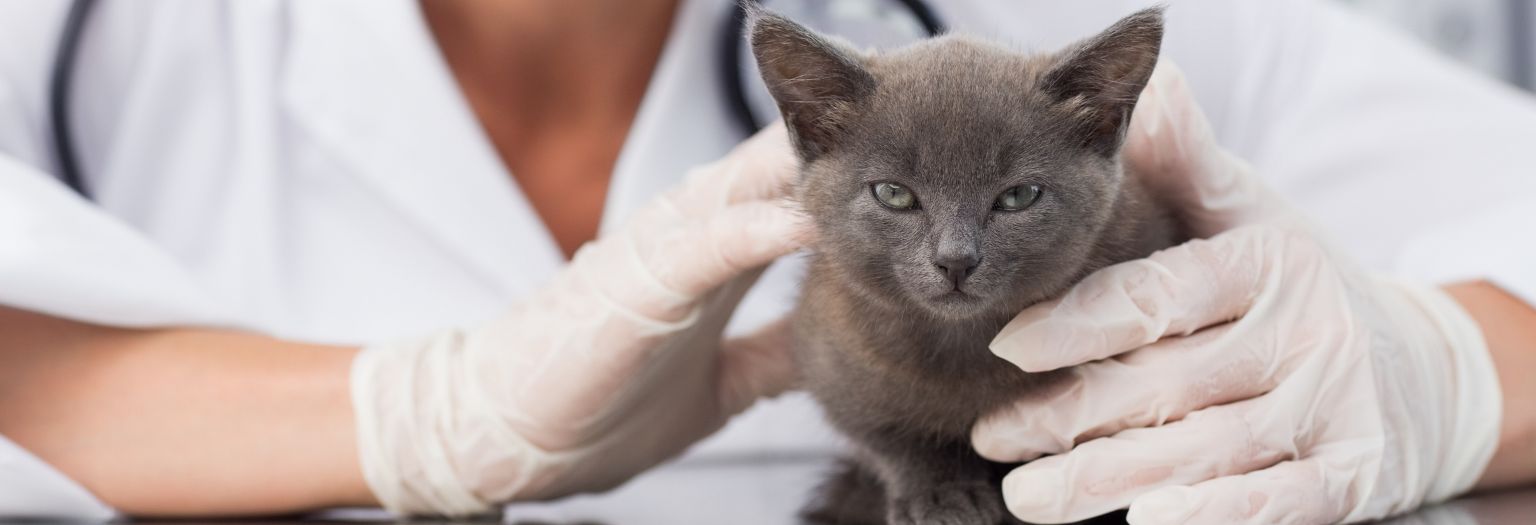We all love the smell of puppy breath or watching a new kitten play. Some of our happiest moments as pet owners come when we finally choose to bring a new puppy or kitten into our home. This special time is filled with snuggles, purrs, eating, and toys. Whether your pet is a long-awaited breed-specific dog that you preselected or a stray you obtained at no charge, the initial expense is only a small part of the total cost of pet ownership. To be a responsible pet owner, it’s imperative to be prepared for the maintenance care expenses so you can enjoy a lifetime with your new friend and keep them healthy for as long as possible.
How Much Does a Pet Cost?
Puppies and kittens are irresistibly cute, but it’s critical to fully understand the costs involved in pet ownership. The expenses of pet care vary depending on factors like breed, size, and health needs, as well as their expected lifestyle.
From initial supplies such as food, beds, and toys, to ongoing expenses like veterinary care and grooming, being prepared for these throughout your pet’s life will help you be ready to financially take care of any needs they have. Pet ownership, while incredibly rewarding, can be expensive without preparation, so providing clarity to what types of expenses owners need to consider when budgeting for their pet eliminates unpleasant surprises later.

The Initial Cost of Pet Ownership
Purebred or not, all pets come with expenses beyond obtaining that cute face. After paying the adoption or breeder fees, there are additional expenses of initial pet ownership as you welcome a new companion into your home.
These one-time expenses won’t recur, but are essential to making a pet comfortable in their new home. These depend on your pet’s size, needs, and your personal preferences as an owner.
Common upfront expenditures for a new pet include:
- Adoption or Breeder fee: $0-$5,000
- Food and Water Dishes: $20
- Crate and Beds: $50-$350
- Climbing Tower: $50-$200
- Collar and Leash: $15-$100
- Nail Trimmer: $25
- Brush or Deshedder: $20-$50
- Litter Box and Mat: $35
The First Year of Costs for Dogs and Cats
Whether your new pet is a dog or cat, many of the first year expenses will be similar. Each will need an internal parasite examination, veterinary visits beginning at 6-8 weeks of age to assure they are healthy and receive age appropriate vaccinations, continuing every 3-4 weeks until 16 weeks old, heartworm and parasite preventative, and spaying or neutering, among other things.
During the first year of owning a pet, be prepared for expenses like:
- Vaccination Series Through 16 Weeks: $200-$500 depending on lifestyle
- Veterinary Examinations Through 16 Weeks: $300-$360
- Internal Parasite Exam: $36-$100
- Deworming, if needed: $50-$80
- Flea, Tick, Heartworm Preventative (12 months): $140-$450 (size based)
- Microchipping: $65-$100
- Spay or Neuter: $300-$900
- Pre-Anesthetic Lab Work: $120-$300
- Quality Food: $300-$2500
- Cat Litter: $120
- Dog Training: $65-$150 per session (more for sleep away training)
Ongoing Expenses
After the first year of ownership, the maintenance costs of pets decrease significantly. However, there are a few ongoing costs to be aware of and set money aside for. For healthy pets, the majority of the expense will be the annual veterinary wellness examinations and vaccinations.
- Annual Wellness Examination: $70-$100
- Annual Internal Parasite Examination: $36-$100
- Annual Wellness Lab Work: $150-$400
- Vaccinations: $65-$200 depending on lifestyle
- Flea, Tick, Heartworm Preventative (12 months): $140-$450 (size based)
- Quality Food: $300-$2,500
- Cat Litter: $120
The remainder of the major expense will be split between feeding and grooming costs. Choosing a nutritious and appropriate diet is important for your pet’s well-being, but this will vary depending on your pet’s size, age, health condition, and food preferences. Pet owners should consider purchasing veterinary-recommended food brands as an investment in their pet’s health, as studies have shown that pets that consume nutritious diets with high-quality ingredients have better overall health, including better immune function and optimal body condition.
As for grooming, costs again will vary depending on the type of pet you own, their breed, and their size, as well as if you choose professional grooming or grooming at home. Both dogs and cats have unique grooming needs and best practices that should be followed which impact regular grooming costs. For example, breeds of dogs that shed heavily or need regular hair cuts will incur greater regular grooming costs than wirehaired dogs who just need regular at-home brushing. Owners who are able to brush and trim their cat’s nails at home will save more than those who opt to take their cat to a veterinarian or groomer for nail trims.
Thinking ahead about food and grooming costs for dogs and cats is also very helpful in determining which pet you should obtain that fits best with your finances.

Other Expenses and Health Care Costs for Pets
After reviewing necessities, there are a few other items and health services to discuss. These often aren’t on a new pet owner’s radar for expenses they’ll need to cover during their pet’s lifetime, but are important contributors to a healthy, happy, and long life for your pet.
For the best health, after the age of about 3 years old, most pets need to have anesthetic dental cleanings annually. The rate for these is commonly between $500-$1000, but differs depending on your area.
Your pet may also fall ill and these visits incur expenses outside of the norm. What if your pet develops chronic allergies and needs ongoing medication? Your dog or cat could even require emergency surgery from an unexpected accident. All of these necessitate an emergency fund to be set aside specifically earmarked for your pet. We see too many people having to make heartbreaking choices because nobody thinks their pet will get sick or hit by a car. Knowing this fund is present allows you to make decisions in the moment instead of fearing how you will pay the bill. There are also several third party payment solutions offering interest free periods that specifically cater to veterinary clients. Almost all veterinary practices accept their payments, allowing clients to essentially enjoy a “payment plan” without the veterinarian taking on the liability.
Pet insurance is also worth consideration, but only prior to any diagnosis, as they exclude pre-existing conditions. If you’re unsure whether pet insurance is the right investment for you and your pet, be sure to ask your veterinarian for any recommendations they have when it comes to pet insurance providers or plans.
How to Budget for a Dog or Cat
Budgeting for a dog or cat involves more than just planning for their adoption, food and vet bills – and pet owners need to make sure they have a plan to properly fund their new baby’s health and wellness. Additional costs, such as daycare for high-energy breeds, grooming, and boarding for pet parents who travel frequently, can add up quickly. Think about your dog’s needs and your lifestyle to create a realistic budget that includes both routine and unexpected expenses. Knowing how to budget for a dog, cat or any other pet properly will help you avoid financial surprises and ensure your pet receives the best care throughout their life.
- Initial costs: Expect to spend on adoption fees, spaying/neutering, vaccinations, and microchipping after adopting your pet. These will be the first expenses when obtaining a new pet.
- Routine veterinary care: Plan for yearly checkups, vaccinations, flea/tick prevention, and dental care.
- Food and treats: Budget for quality food and regular treats to maintain your pet’s health and happiness.
- Emergency fund: Set aside money for unexpected medical emergencies or accidents. You never know when you’ll need this, but you’ll be glad you set some money aside for any unexpected treatments.
- Pet insurance: Consider monthly premiums for pet insurance to help with vet bills, but remember, it may be better to get pet insurance early on, as conditions may not be covered if you purchase insurance after diagnosis.
- Grooming and hygiene: Include costs for grooming, nail trimming, and hygiene products.
- Toys and supplies: Budget for items like toys, bedding, litter, collars, and leashes, and remember, you may need to upgrade these as your pet grows or they become worn out.
- Training and pet sitting: Plan for potential expenses in training classes, boarding, or pet-sitting services when traveling. Having a plan in place for these expenses helps ensure your pet is safe and sound while not disrupting your travel plans.
Don't have a vet in your area yet? We can help you find a local veterinarian.
If you have more questions, the GeniusVets Teletriage platform will give you unlimited access to text and/or video calls with board-certified veterinarians! To learn more click here.
This information was first seen on Northern Oaks Bird & Animal Hospital.


The Ultimate Guide
to Cat Care
This free guide is an indispensable manual for cat ownership. Filled with veterinary advice and recommendations on every important topic at each stage of your cat's life, this is all the stuff that responsible cat owners need to know. That is why we are making it free!
